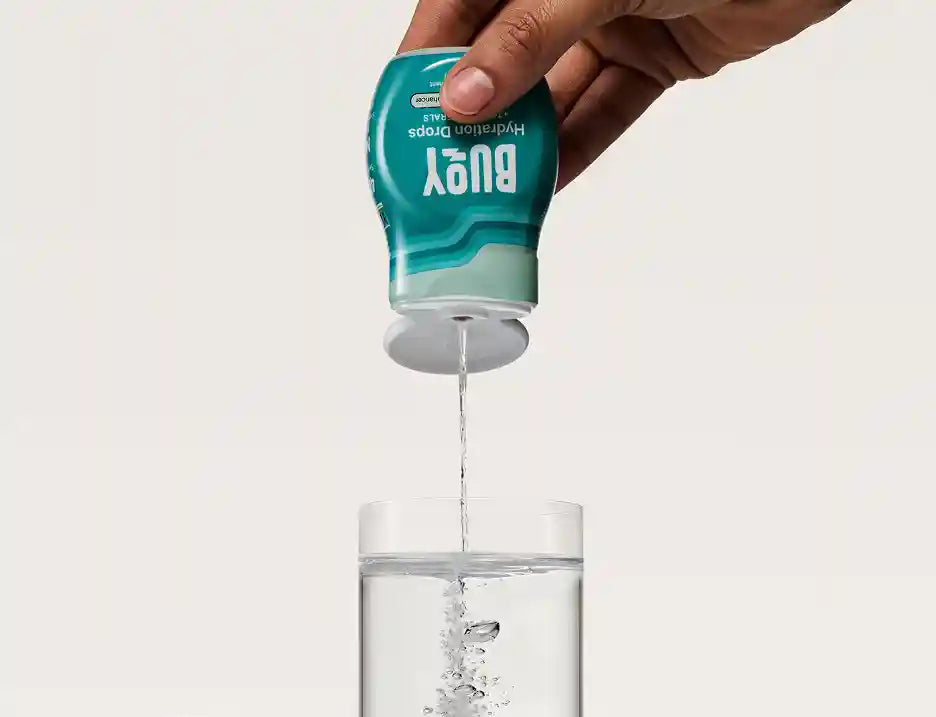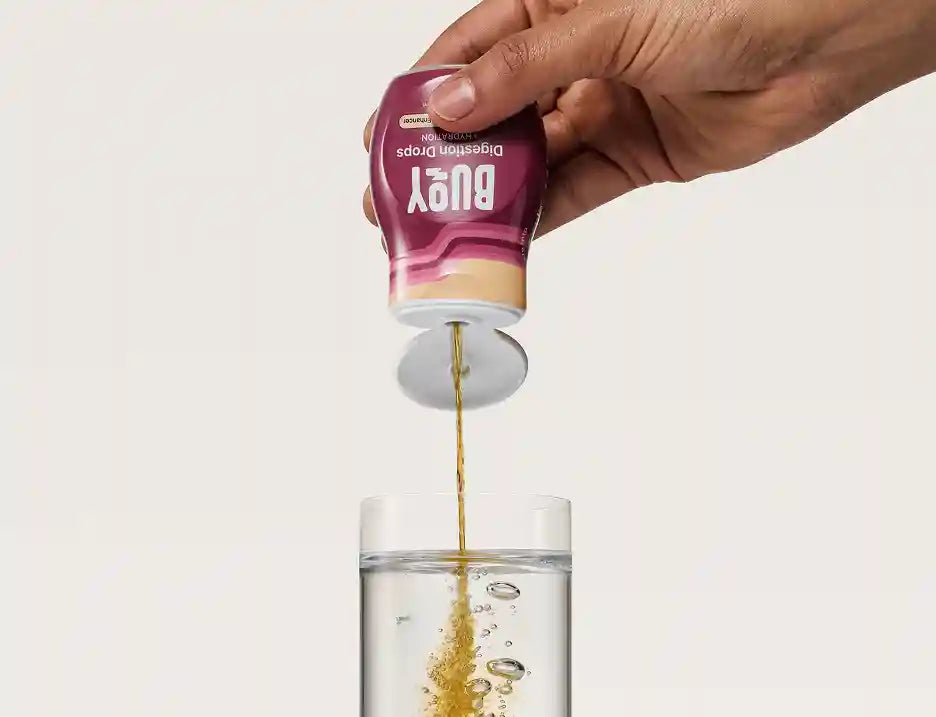
Coping Strategies for POTS Patients: Practical Tips for Managing Symptoms
Do you ever feel like managing your POTS symptoms is a constant uphill battle? With symptoms like dizziness, a rapid heartbeat, and fatigue making daily tasks challenging, it's easy to feel overwhelmed.
But there’s hope. By adopting effective coping strategies, you can take control of your symptoms and improve your quality of life. Effective POTS coping strategies can include lifestyle modifications, symptom management techniques, stress reduction, and building a strong support system.
Essential Takeaways:
- Practical Lifestyle Changes for Managing POTS: Coping with POTS involves making key lifestyle modifications, such as pacing daily activities, incorporating low-impact exercises, and maintaining a balanced diet rich in fluids and electrolytes. These changes can significantly improve your symptoms and overall quality of life.
- Building a Strong Support System: You don’t need to navigate this condition on your own. Creating a strong support network is essential for living well with POTS. This includes educating family and friends about the condition, joining support groups, and working closely with your healthcare team to develop a personalized treatment plan.
In this guide, we’ll explore practical tips, lifestyle changes, and supportive therapies designed to help you navigate life with POTS. Let's dive in and discover how you can better manage your condition and thrive with this chronic condition.
- Understanding POTS Symptoms
- Lifestyle Modifications
- Managing Symptoms
- Stress Management
- Building a Support System
- Practical Tips for Daily Life
- Long-Term Management
Understanding POTS Symptoms
First things first – let's talk about the symptoms of POTS and how they can impact your daily life. Some of the most common symptoms include:
- Dizziness or lightheadedness upon standing
- Rapid heartbeat (tachycardia)
- Fatigue and weakness
- Brain fog and difficulty concentrating
- Headaches
- Shaking or tremors
- Nausea and digestive issues (1)
These symptoms can make even the most basic daily activities feel like a challenge, from getting out of bed in the morning to running errands or socializing with friends and family.
POTS Symptoms Can Be Different for Everyone
It's important to recognize that everyone's experience with POTS is unique, and your symptoms may vary from day to day or even hour to hour. That's why it's so important to have a range of coping strategies in your toolkit – so you can adapt and adjust based on how you're feeling at any given moment.
By learning to recognize your symptoms and understanding how they impact your body and your daily life, you can start to develop a proactive approach to managing your POTS and taking control of your health.
What Causes POTS?
Now that we know the common symptoms of this condition, you might be wondering what causes POTS. While the exact causes of POTS are not fully understood, research suggests that factors such as autonomic nervous system dysfunction, abnormal blood flow regulation, and immune system disorders may play a role in the development of this condition.
Lifestyle Modifications
One of the most important aspects of coping with POTS is making lifestyle modifications that can help you manage your symptoms and improve your overall health and well-being. Let's explore some key areas where you can make changes.
Daily Routine Adjustments
When you're living with POTS, it's important to pace yourself and listen to your body. That might mean breaking up tasks into smaller, more manageable chunks, taking frequent breaks throughout the day, and avoiding prolonged periods of standing or sitting.
Try to plan your day in a way that balances activity with rest, and don't be afraid to say no to activities or commitments that might be too draining (1).
Exercise and Physical Activity
While it might seem counterintuitive, regular exercise can actually be hugely beneficial for POTS patients. The key is to work with your healthcare team to develop a safe, tailored exercise program that takes your specific symptoms and limitations into account.
Low-impact activities like swimming, recumbent biking, and gentle yoga can be great options for building strength and endurance without exacerbating symptoms. Remember to start slow and listen to your body – even a few minutes of movement each day can make a big difference over time (1,2).
Diet and Hydration
What you eat and drink can also play a big role in managing POTS symptoms. Staying adequately hydrated is even more important when you have POTS, so aim to drink plenty of fluids throughout the day, especially water and electrolytes.
Eating a balanced diet that includes plenty of high-sodium foods (like salted nuts, pickles, and broth) can also help increase blood volume and improve symptoms. Just be sure to work with your healthcare team to determine the right sodium intake for you (1,3).
Sleep Hygiene
Getting enough quality sleep is essential for managing POTS symptoms and promoting overall health. To improve your sleep hygiene, try establishing a regular sleep schedule (even on weekends), creating a cool, dark, and quiet sleep environment, and avoiding screens and stimulating activities before bedtime (4).
Sleeping in the Head-Up Position
One helpful strategy for managing POTS symptoms during sleep is to elevate the head of your bed by 4 to 6 inches. This can be done by placing large phone books, blocks of wood, or bed risers under the feet at the top of the bed.
This slight angle helps increase circulating plasma and blood volume throughout the night, which can reduce symptoms like dizziness and fatigue in the morning. It's important to note that this approach is different from simply sleeping on a few extra pillows under your head (5).
Insomnia and Other Sleep Issues
If you're struggling with insomnia or other sleep issues, don't hesitate to talk to your doctor – there may be medications or other therapies that can help. Incorporating the head-up sleeping position, along with other sleep hygiene strategies, can be a game-changer in managing your POTS symptoms and getting the restful sleep you need to tackle each day. (4).
Learn more about how diet and lifestyle changes can help your POTS symptoms in our Practical Guide to Lifestyle and Diet Changes for Managing POTS.

Staying adequately hydrated is important for managing POTS symptoms. Remember to drink plenty of fluids, especially water and electrolytes, throughout the day.
Managing Symptoms
In addition to lifestyle modifications, there are also a number of strategies you can use to manage specific POTS symptoms as they arise. Here are a few key areas to focus on.
Medication Management
If you've been prescribed medications to help manage your POTS symptoms, it's important to take them as directed and keep track of any side effects or changes in your symptoms.
Don't hesitate to talk to your doctor if you have questions or concerns about your medication regimen – they may be able to adjust your dosage or try a different medication to better suit your needs.
Compression Garments
Wearing compression stockings or garments can help improve blood flow and reduce symptoms like dizziness and lightheadedness. Look for garments with a graduated compression level (meaning they're tighter at the ankle and looser at the top) and make sure they fit properly for maximum benefit.
Cooling Techniques
Many people with POTS experience heat intolerance, which can exacerbate symptoms like fatigue and rapid heartbeat. To stay cool, try using fans, taking cool showers, or applying cold packs to your neck and wrists.
Posture and Movement
Changing positions slowly and carefully can help prevent sudden drops in blood pressure that can worsen POTS symptoms. When standing up from a seated or lying position, take your time and use support (like a chair or wall) if needed. If you start to feel dizzy or lightheaded, try sitting or lying down immediately and elevating your feet until the feeling passes.
It's important to work closely with your healthcare provider to develop a comprehensive POTS treatment plan that may include medications, lifestyle changes, and other therapies tailored to your specific needs. Some common medications used to manage POTS symptoms include beta-blockers, midodrine, and fludrocortisone (1).
Discover the latest POTS treatments in our comprehensive guide to Effective Treatments for POTS.
Stress Management
Stress can be a major trigger for POTS symptoms, so finding effective ways to manage stress is crucial for overall symptom management. Here are a few strategies to try
Mindfulness and Relaxation Techniques
Practicing mindfulness and relaxation techniques like deep breathing, meditation, and progressive muscle relaxation can help calm your nervous system and reduce stress-related symptoms.
Try incorporating these techniques into your daily routine, even if it's just for a few minutes at a time – over time, they can make a big difference in your overall stress levels and symptom management (6).
Therapeutic Activities
Engaging in hobbies and activities that you enjoy can be a great way to reduce stress and improve your overall quality of life. Whether it's reading, painting, gardening, or playing music, finding activities that bring you joy and relaxation can be a powerful coping tool.
Professional Support
Don't underestimate the value of professional support when it comes to managing stress and coping with POTS. Working with a therapist or counselor can provide you with valuable tools and strategies for managing stress, processing emotions, and building resilience.
Remember, taking care of your mental health is just as important as taking care of your physical health – so don't hesitate to seek out the support you need.
Building a Support System
Living with POTS can be isolating at times, but building a strong support system can make all the difference in your ability to cope with symptoms and maintain a good quality of life. Here are a few key areas to focus on.
Family and Friends
Educating your loved ones about POTS and how it affects you can go a long way in helping them understand your needs and provide appropriate support. Don't be afraid to communicate openly and honestly about your symptoms, limitations, and what you need from them.
Support Groups
Joining a POTS support group (either online or in-person) can be a great way to connect with others who understand what you're going through. Sharing experiences, tips, and encouragement with others who “get it” can be incredibly validating and empowering.
Healthcare Team
Building a strong relationship with your healthcare team is crucial for effective POTS management. Don't hesitate to ask questions, express concerns, or advocate for your needs – your healthcare providers are there to support you and help you find the best treatment options for your unique situation.

Connecting with loved ones, joining support groups, and working closely with your healthcare team can greatly enhance your quality of life and help you cope with POTS.
Practical Tips for Daily Life
Managing POTS on a day-to-day basis can be challenging, but there are a number of practical strategies you can use to make daily life a little bit easier. Here are a few tips to keep in mind.
Planning and Prioritizing
Taking the time to plan out your day and prioritize your activities can help you conserve energy and avoid overexertion. Make a list of the most important tasks you need to accomplish each day, and don't be afraid to ask for help or delegate when needed.
Assistive Devices
Using assistive devices like shower chairs, grab bars, and mobility aids can make daily tasks much easier and safer. Don't be afraid to invest in tools that can help you conserve energy and prevent falls or other accidents.
Emergency Preparedness
Having a plan in place for emergencies can provide peace of mind and ensure that you get the help you need when you need it. Keep a list of emergency contacts handy, know the signs and symptoms that warrant seeking medical attention, and consider wearing a medical alert bracelet or carrying a medical ID card.
Long-Term Management
Coping with POTS is an ongoing process, and it's important to take a long-term approach to symptom management and overall health. Here are a few key strategies to keep in mind.
Setting Realistic Goals
It's important to set realistic goals for yourself and celebrate your progress along the way, no matter how small. Remember that everyone's journey with POTS is unique, and it's okay to take things one day at a time.
Continuous Learning
Staying informed about the latest research and treatment options for POTS can help you take a proactive approach to your health. Don't hesitate to ask questions, do your own research, and advocate for yourself when it comes to your care.
As you continue to learn about POTS, it's helpful to be aware of the different types of POTS, which include:
- Hyperadrenergic POTS: This type of POTS is characterized by excessive sympathetic nervous system activity, leading to symptoms such as rapid heartbeat, tremors, and feelings of anxiety or panic. Treatment may involve medications like beta-blockers or clonidine to help regulate the sympathetic nervous system.
- Neuropathic POTS: In this type of POTS, damage to the peripheral nervous system affects blood flow regulation, causing symptoms like dizziness, fainting, and poor circulation. Treatment may focus on improving blood flow and managing symptoms through medications, compression garments, and physical therapy.
- Hypovolemic POTS: Hypovolemic POTS is associated with low blood volume, which can contribute to symptoms like lightheadedness, fatigue, and rapid heartbeat. Treatment often involves increasing fluid and salt intake, using compression garments, and sometimes medications to help retain fluids (1).
Each type may have slightly different symptoms and treatment approaches, so understanding your specific diagnosis can help you better manage your condition. It's essential to work closely with your healthcare provider to determine the best course of action for your unique situation.
Advocacy and Awareness
Raising awareness about POTS and advocating for better research, treatment, and support can be a powerful way to cope with the condition and make a difference in the lives of others. Consider getting involved with POTS advocacy organizations or sharing your story to help raise awareness and reduce stigma.
You’ve Got This!
We know POTS can be challenging, but remember, you're not alone, and you have the power to take control of your symptoms and your life. By incorporating these coping strategies into your daily routine and building a strong support system, you can navigate the ups and downs of POTS with greater ease and resilience.
Coping with POTS is an ongoing process, and it's okay to have good days and bad days. Celebrate your victories, no matter how small, and don't be too hard on yourself when things feel tough.
With patience, persistence, and a proactive approach to symptom management, you can live a full and fulfilling life with POTS. So keep learning, keep advocating for yourself, and most importantly – keep believing in your own strength and resilience. You've got this!

Help manage your POTS symptoms with the Buoy’s Ocean Electrolyte Kit, an easy and convenient way to add sodium and electrolytes to your day.
References:
- Cleveland Clinic. (2022). Postural Orthostatic Tachycardia Syndrome (POTS). Retrieved from https://my.clevelandclinic.org/health/diseases/16560-postural-orthostatic-tachycardia-syndrome-pots
- Self. (2024). How to Safely Exercise With POTS, According to Experts. Retrieved from https://www.self.com/story/how-to-exercise-with-pots
- Standing Up to POTS. (n.d.). Nutritional Strategies to Help Manage POTS. Retrieved from https://www.standinguptopots.org/nutritionstrategiesPOTS
- POTS UK. (n.d.). Important Lifestyle Changes: Sleep. Retrieved from https://www.potsuk.org/managingpots/sleep/
- Fu, Q. & Levine, B. D. (2018). Exercise and Non-Pharmacological Treatment of POTS. Autonomic Neuroscience: Basic & Clinical, 215, 20–27. Retrieved from https://www.ncbi.nlm.nih.gov/pmc/articles/PMC6289756/
- Raj, V., Opie, M., & Arnold, A. C. (2018). Cognitive and Psychological Issues in Postural Tachycardia Syndrome. Autonomic Neuroscience: Basic & Clinical, 215, 46–55. Retrieved from https://www.ncbi.nlm.nih.gov/pmc/articles/PMC6160364/




